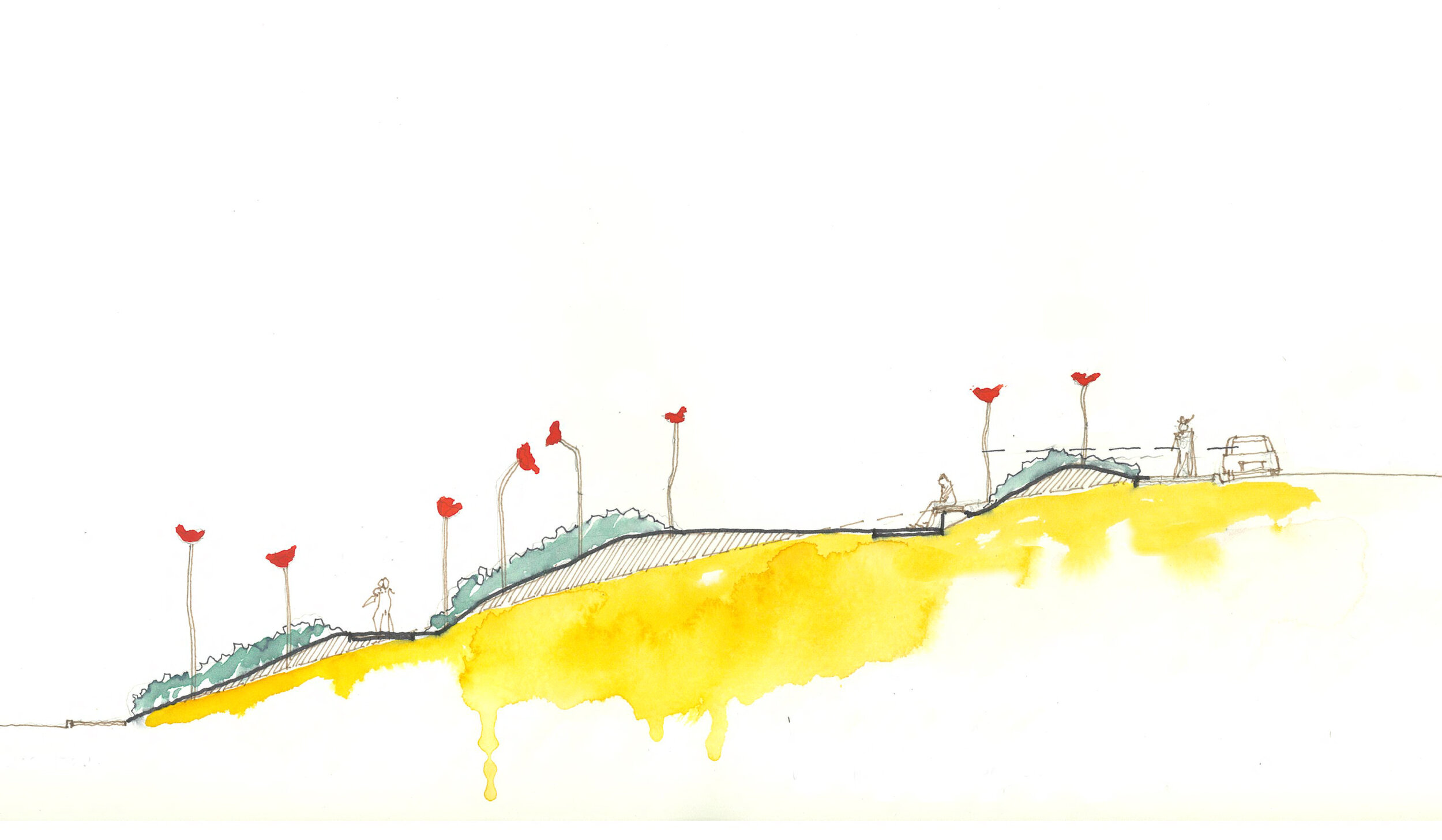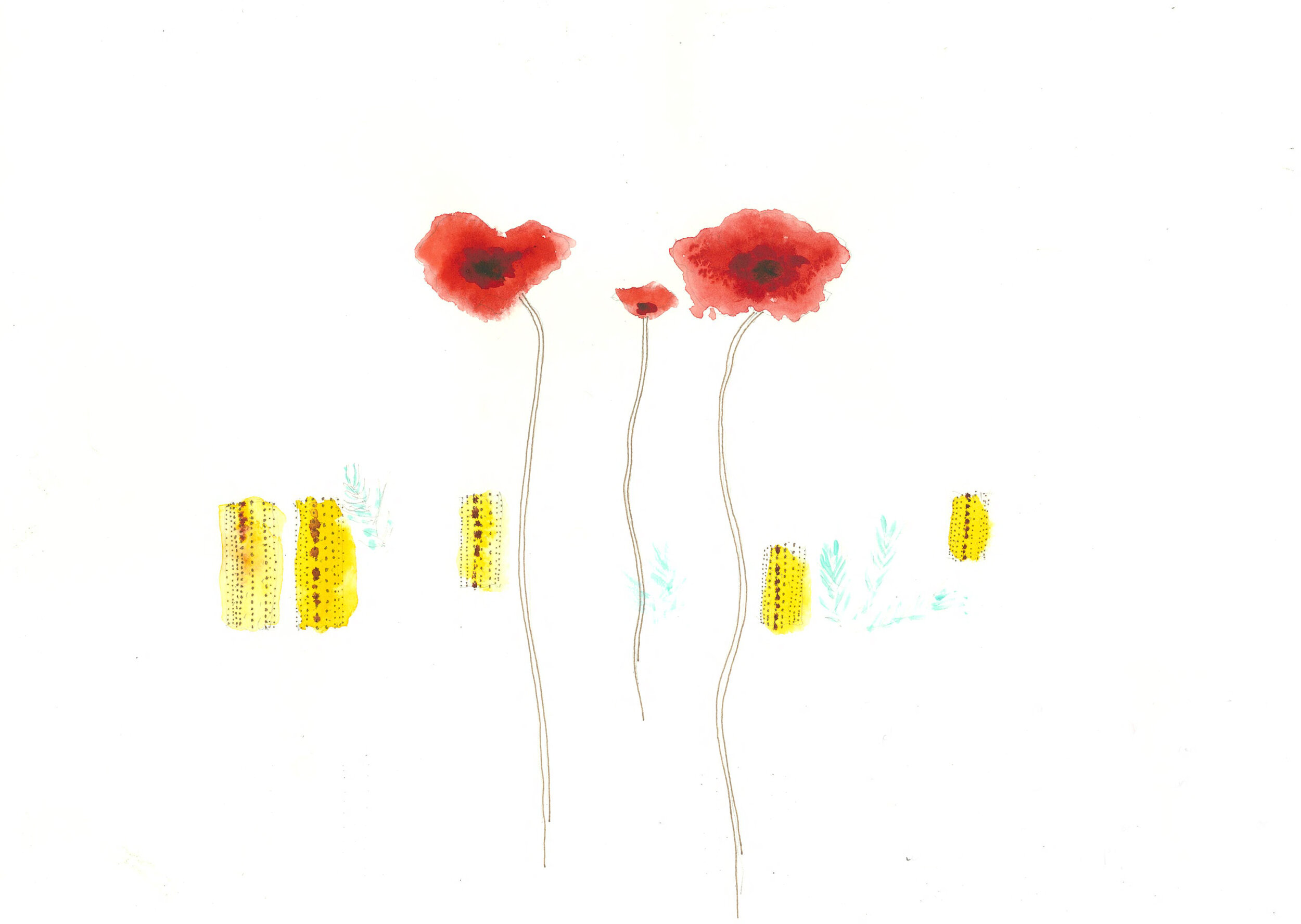Remembrance poppies
The Flanders poppy (Papaver rhoeas) seeds lie dormant for much of the year. They were disturbed on the front lines of France in 1915 by the soldiers fighting in World War 1. Coincidentally, the weather was perfect conditions for them to flower every year for the next four after the war from March to August in red blankets across the fields on which the soldiers fought and died. They also flowered in Turkey when the ANZAC’s landed at Gallipoli. The flowers of the Flanders poppy are associated surviving and fallen soldiers on both Remembrance Day (11 November) and on Anzac Day (25 April) in Australia. They are worn with pride, used in wreaths and sold to raise funds for charities that support returned solders.
Colin designed this sculpture garden to commemorate the Anzacs. The oversized bronze and enamel Flanders red poppies formed a remembrance sculpture, a memorial that celebrates life through plant growth. Some commissions are sadly rejected, this was one of those. The watercolour paintings of Flanders poppies and Melaleuca pallida, the lemon bottlebrush, is endemic to eastern Australia acknowledges the sacrifice of the Aboriginal community in the war. I acknowledge that this work was created on the traditional lands of the Cadigal people of the Eora nation, and pay my respect to Elders both past, present and future.
Daniel Smith watercolours on Canson fine pre-stretched watercolour paper


